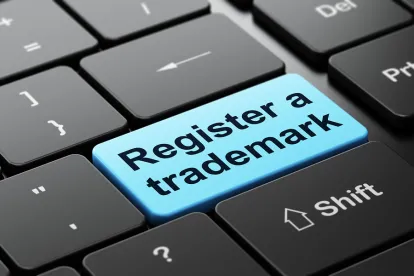This is the first guest post in a 4-part series regarding well-known marks in China from Beijing East IP authors Yan Zhang, Feifei Bian & Austin Chang.
Securing well-known mark (WKM) recognitions in China can give a broader protection to brand owners in both administrative and judicial disputes. block bad faith trademark filings from registration and invalidate trademarks registered in bad faith in particular cases. WKM recognition can also provide a strong basis for determining trademark infringement and awarding damages. In this series, we will share our insights on how to secure WKM recognitions for registered trademarks in China. In Part I, we will be sharing WKM recognitions benefits, principles, and evidence collection.
1. Well-known mark recognition benefits
Unlike a regular registered trademark that can only block identical or similar mark designed on identical or similar goods or services, a WKM offers cross-class protection against identical or similar marks designating goods or services in related classes. That is, if a trademark application that is identical or similar to a WKM but is filed in a different but related class where the WKM owner does not have a prior mark, the WKM owner may oppose the trademark application citing its WKM.
In trademark infringement or unfair competition cases, a regular registered trademark may serve as a legal basis for likelihood of confusion against an identical or similar mark used on identical or similar goods or services. If a trademark is recognized as well-known, not only can that WKM recognition be used as a legal basis against identical or similar mark used for identical or similar goods or services, but WKM recognition can also be used against dissimilar goods or services for likelihood of confusion, dilution and/or tarnishment.
2. Well-known mark recognition principles
Article 13 of the China Trademark Law provides that the rights holder of a well-known trademark among the relevant public may request well-known trademark protection according to regulations in this Law, when he believes his rights have been infringed upon. Article 2 of the Supreme People’s Court’s Interpretation of Several Issues Concerning the Application of the Law to the Trial of Civil Dispute Cases Involving Well-Known Trademarks provides that in civil disputes, where an interested party based its factual claims on the well-known status of a mark, the court shall, if it finds necessary, establish whether the mark in dispute is well-known according to the case’s circumstances. The message delivered above is clear that WKM recognitions would not be automatically given by the court or the CNIPA. WKM recognitions need to be petitioned in a case. Only upon findings that WKM recognitions are necessary to protect the interested party’s trademark rights will such recognition be considered. Generally speaking, a mark can be recognized as well-known if all of the following principles apply, a) case-by-case recognition, b) upon-written-application recognition, and c) need-based recognition.
a. Case-By-Case Recognition
First, the proprietor needs to expressly request for WKM recognition in its arguments for an administrative or judicial case where the disputed mark could be considered as a copy or imitation of the proprietor’s mark and is likely to mislead the relevant public and impair its rights.
Second, if the trademark is recognized as well-known, that WKM recognition is effective only in the particular case where the WKM recognition in necessary to protect the trademark proprietor’s rights. Such WKM recognition does not necessarily suggest it will be applied in other cases. In other words, the WKM recognition in one case does not ripple to future cases.
b. Upon Written Application Recognition
The CNIPA or the courts will assess and decide whether a mark has achieved the WKM status only when the proprietor has petitioned for WKM recognition in a particular case. They will not actively grant WKM recognition in the absence of proprietor’s specific petition.
c. Need-Based Recognition
WKM recognition is only granted in a case where the rights and interests of the proprietor cannot be protected properly and comprehensively by the laws unless the proprietor’s mark is recognized as a WKM. In other words, if the proprietor’s interests can be protected based on prior trademark registrations, trade names, copyrights, etc., the CNIPA and the courts tend to adopt any such ground(s) to reject infringing marks rather than recognize the proprietor’s mark as well-known. Therefore, the prerequisite to request for WKM recognition is to find a suitable case, which usually has the following features:
• Goods and services are neither too closely related nor too distant. This is because if the goods and services are closely related, the CNIPA may simply determine the goods and services are similar by slightly exceeding the Nice Classification, so granting WKM recognition is no necessary; if too irrelevant, consumer confusion or brand dilution would not be found
• The disputed mark and the cited mark are either identical or confusingly similar.
• The disputed mark’s applicant has bad faith in free riding the cited mark’s fame, which will further increase the likelihood of consumer confusion, making WKM recognition necessary to prevent the disputed mark from registration
3. Well-known mark recognition evidence collection
Our experience taught us that WKM recognition does not rely on any single type of evidence. Quite the contrary, obtaining WKM recognition requires sufficient evidence proving that the marks are widely known and reputable among the relevant public in China. Together with persuasive arguments to justify and emphasize the necessity for the mark involved to obtain WKM recognition for protection in a suitable case.
According to relevant legislations, regulations and judicial opinions, the types of evidence required for WKM recognition can be categorized as follows.
a. Level of awareness of the mark by relevant public
b. Duration of continuous use of the mark
c. Duration, degree, and geographical scope of the promotion for the mark
d. Protection records of the mark as a well-known mark (or famous mark), and
e. Other factors.
These five categories of evidence are further elaborated as follows.
a. Level of awareness of the mark by relevant public
i. Prizes, awards, or certificates
Prizes, awards, or certificates received from governments, associations, or commercial organizations for the mark involved. In particular, those received from central government or provincial governments. Fortune 500 rankings and other similar recognitions are also important.
ii. Statistics reports
Annual reports or audit reports issued by qualified accounting firms or published by authoritative agencies to demonstrate the sales volume, income, profit, tax, output, market share, ranking, advertising expenditure, etc. of products bearing the mark involved.
Other materials showing the sales scope, distribution of sales network, sales channels, sales modes, etc. of goods under the mark involved are also convincing evidence.
iii. Media coverage
Newspapers, magazines, periodicals, books, TV programs, broadcasting stations, etc. regarding the history, story, reports about the mark involved. In practice, a formal search report issued by the China National Library would bear more weight and authority as evidence comparing to printouts or screenshots from Internet search in proving the time span and geographical areas of the media coverage.
b. Duration of continuous use of the mark
This may include the materials showing the very first use and the subsequent continuous use of the mark, such as:
i. Worldwide trademark registrations
Both a list of worldwide trademark registrations and selected copies of trademark registration certificates (preferably in mainland China, Hong Kong, Macao, Taiwan, and other jurisdictions where Chinese is the dominant language) are of help.
ii. Statements made by domestic distributors
Any statements made by domestic distributors in China regarding the mark involved can be used as evidence. Statements should cover the starting date and time span of the distribution, the territorial scope of the distribution (major, medium-sized, or small cities, towns, etc., eastern coastal China, or the central and western regions of China), and campaigns that have been held for the promotion and sales of the products bearing the mark involved. It is highly preferred that the distribution covers more than ten (10) provinces in mainland China.
iii. Commercial use materials
Product photos, brochures, and inserts bearing the mark involved.
Commercial agreements, invoices, shipping receipts, bills of lading, bills of import or export, bank pay-in slips, or any other materials relating to the goods bearing the mark involved.
Expos, exhibitions, conventions, and relevant materials thereof bearing the mark involved.
iv. Other activities in China
Welfare or charity events, communication with local or central governments in China, collaborations with China research teams or institutions, sponsorship, or investments, etc.
For a registered trademark that is seeking to secure WKM recognition, materials proving it has been registered for no less than three years or has been continuously used for no less than five years shall be submitted as evidence. The duration of the three and five years mentioned should be counted from the application date of the disputed mark, or the date when request for WKM protection is submitted for investigating and handling a trademark infringement case.
c. Duration, extent, and geographical scope of the promotion for the mark
The following materials can be considered:
i. Brochures, photos, and news reports of the publicity commercial activities such as press release to promote the goods under the mark involved.
ii. Media advertising, comments and other marketing materials published via radios, movies and videos, TV programs, newspapers, magazines, network, outdoor, etc. where the advertisement is launched.
For advertising media, CCTV (China Central Television station) and other authoritative nationwide platforms would bear more weight.
In addition, invoices, receipts, advertisement agreements or other evidence regarding the expenditure and quantity of the advertisement (if not confidential) may be provided in support of the materials used for the promotion of the mark.
Please note that materials proving the methods and regional scope of advertising and promotion, types of promotional media used, and advertising volume for the previous three years are more preferable.
d. Protection records of the mark involved as a well-known mark (or famous mark)
This may include the protection records of the mark involved by the court, administrative authority, domain name dispute centers (such as CIETAC, WIPO, and NAF) in China and worldwide, in particular:
i. CNIPA decisions and court judgments affirming that the mark involved has certain fame and reputation.
ii. Record of China administrative authorities investigating and punishing the counterfeit products bearing the mark involved.
iii. Relevant worldwide legal documents affirming the mark involved as a well-known mark or a famous mark and granted protection accordingly.
e. Other factors
The CNIPA and the courts shall consider all elements listed above, however, not all elements have to be satisfied before finding a mark as well-known. Any information or materials that may reflect the fame of the mark involved and products bearing the mark involved would be helpful.
Other examples are:
i. Certificate of Incorporation, Approval Certificates of Oversea Entity Invested Companies, and the business license of affiliated companies in China; If possible, affiliated companies in China may obtain tax payment records from the local tax authority, showing tax payment.
ii. Partnership or cooperation with other corporations, organizations, and institutions for marketing, promotional, or other matters in China.
Yan Zhang obtained her Juris Master degree from China University of Political Science and Law, and joined the firm in 2006. Ms. Zhang co-leads the trademark team. Ms. Zhang’s key practices focus on trademark prosecution, enforcement and litigation, copyright, anti-unfair competition, Customs recordation and domain name disputes.
Feifei Bian Ms. Bian joined the firm after graduation from University of Southern California with a Juris Master degree, representing clients from Fortune 500 corporations, multinational companies to startups in technology, hotel and pharmaceutical areas.
Austin Chang is an employee of the firm.



 />i
/>i

